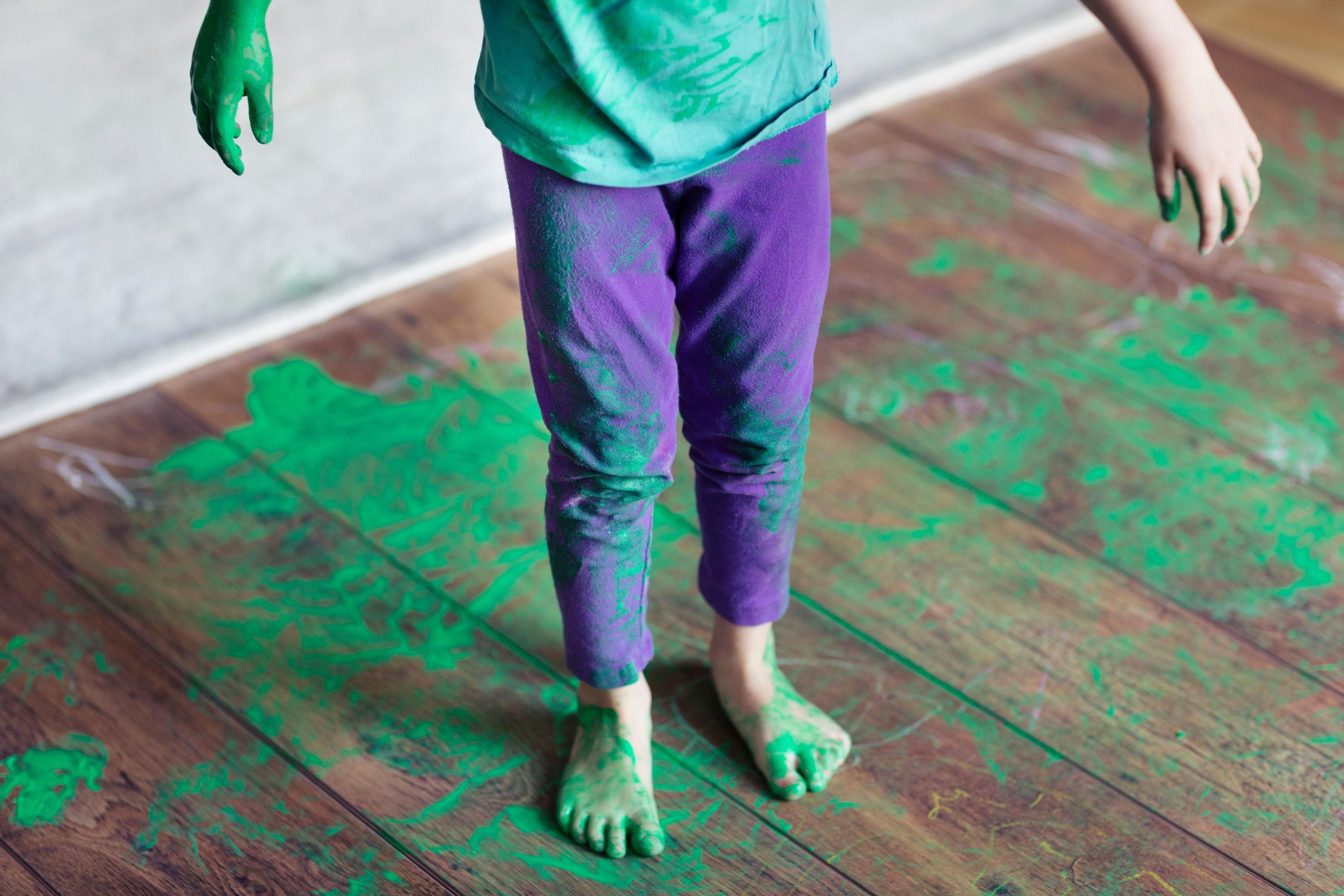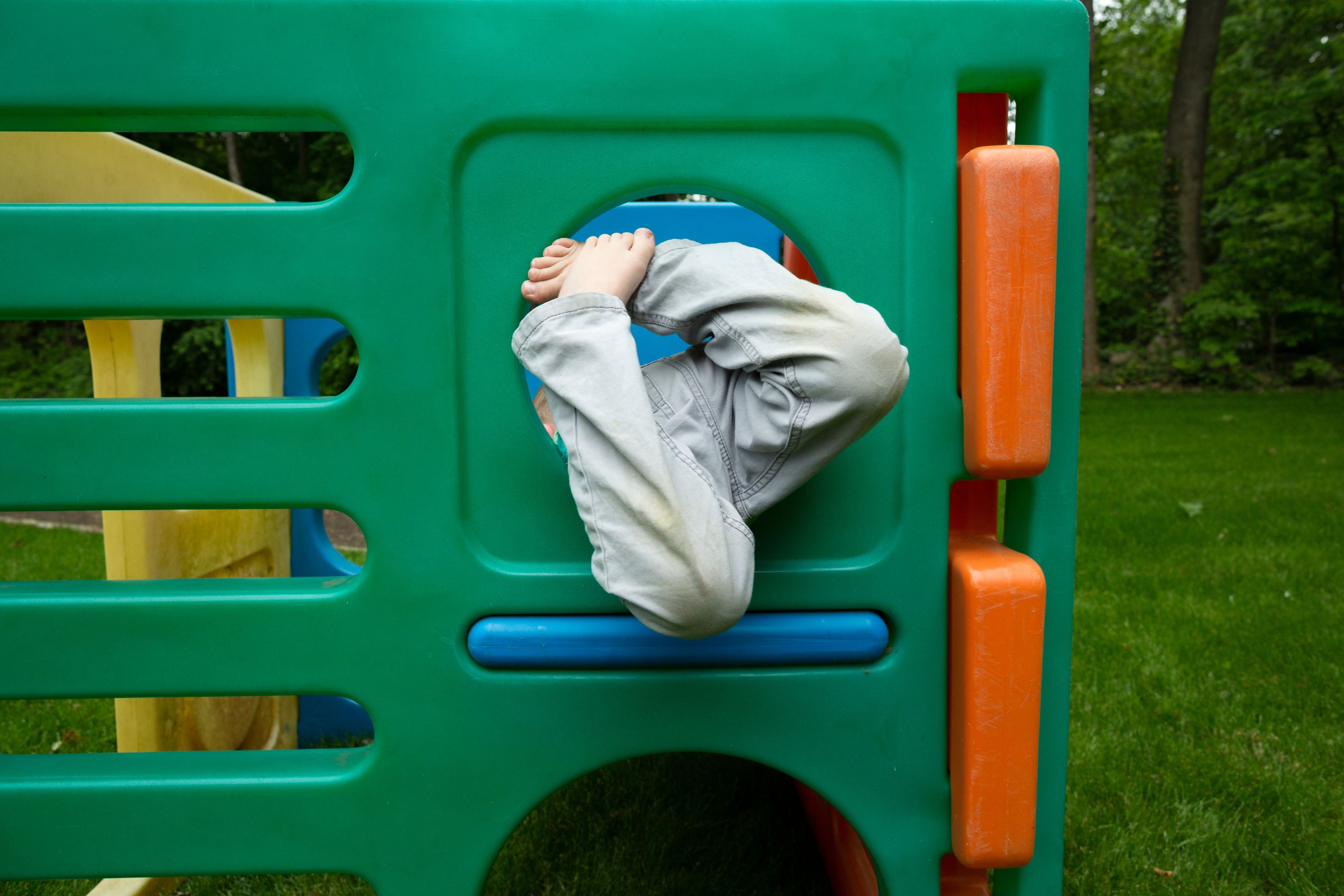We asked the experts how to tackle the top 10 school uniform stains - here's what they said...
We've found out the best ways to get rid of stains on school uniform


Tired of the constant battle against school uniform stains? We've sought advice from the experts on how to tackle the toughest of marks...
You might be a religious follower of Mrs Hinch cleaning tips and an expert at getting foundation out of clothes or cleaning white shoes, but all this is no match for the stubborn stains that kids bring home with them on their school uniform. New research from retailer Next has found that parents in the UK are spending over two hours a week washing their child's school uniform, and that 44% of UK parents have had to throw away an item of school uniform by January due to uncleanable stains. But, as the product team at Next says: "For parents with two or more children, being able to reuse and recycle old school uniforms in the form of hand-me-downs can save a lot of time and money," so knowing how to tackle pesky uniform stains can be invaluable information.
That's why we've spoken to the experts to find out the best way to get rid of the toughest of stains. Kathleen Bell, cleaning expert with eco-friendly cleaning brand smol, told us: "My top tip when it comes to any stain is to act fast in the hope to remove it as quickly as possible. Try to blot rather than rub stains, starting from the outside and work inwards to avoid spreading. And if possible, avoid adding too hot water or tumble drying your stained items as this can essentially ‘cook’ the stain into your child’s uniform." Keep reading to find out how to tackle the top ten culprits for stains on school uniform, so you can be better prepared next time your child comes home with mud all over their freshly washed polo shirt.
1. Paint
Next revealed paint to be one of the top culprits for school uniform stains, with over half of the UK’s school uniforms having at least one paint stain by the start of the Spring term.
Laura Mountford, cleaning expert and author of Live, Laugh, Laundry: A calming guide to keeping your clothes clean – and you happy, shared with Goodto the best way to remove paint from school uniform.

She said: "Stains from both oil based or water based paint can be removed by soaking using a mixture of half detergent, half warm water. Blot the stain vigorously until the paint has been removed then wash as normal in the machine."
Kathleen adds that you should make sure to gently scrape off any excess paint from the garment before you blot it, and that it might be beneficial to first hold the reverse side of the stain under lukewarm running water to help loosen it.
Parenting advice, hot topics, best buys and family finance tips delivered straight to your inbox.
She says you could also try applying a stain remover if the stain is still visible before putting the clothing in the wash, but advises, "Be aware that some stain removers rely on bleach which can damage fabrics; instead opt for stain removers that use enzyme technology to break down the proteins of common stains."
2. Felt tip
Laura says, "Ink (including permanent marker) can be removed from fabrics by dabbing with rubbing alcohol. This will dilute and break down the ink stain before washing."
Though she adds that before you try this method, test the garment for colourfastness by soaking a cotton bud with rubbing alcohol and blotting the area it's applied to with kitchen roll. If no colour comes off on the kitchen roll, then the fabric should be safe to pre-treat.
She adds: "Place the stain face down onto a cloth or paper towel and use a sponge to apply, and the ink should loosen and transfer."
If you don't have rubbing alcohol, Kathleen says you could try using hand sanitiser that has alcohol as one of it's ingredients. She explains, "Using a clean cloth, blot the mark with the sanitiser, but avoid rubbing the stain to stop it from spreading."
3. Mud
Though mud is one of the most common stains that kids pick up on their school uniform, fortunately it's an easy one to remove. In many cases, you can wait for the mud to dry completely and brush of the excess before washing as normal.
For particularly pesky stains however, Kathleen advised us: "Rinse the stain from the reverse side of the garment with cold water, then fill your sink with a mix of tepid water and detergent and let clothing sit in this mixture for 10 minutes. If you can still see the stain when holding the item up to the light, consider using a stain gel and rubbing this in with a clean cloth. Leave the stain gel to sit for five minutes and then wash as normal. "

4. Food and drink
How you remove food and drink stains from school uniform can depend on what the substance is, but fortunately Laura has provided us with a few top tips.
She says, "Tackling food stains can vary, depending on the food. For greasy stains like butter and oil – use detergents and soap." You can also use dish soap to tackle these stains as it is able to break down oils.
Laura adds: "Drinks like fruit juices are oxidisable stains, and bleaches are the most effective way of removing these. Chlorine bleach is the most powerful, but you should use bleach with care as it is toxic.
"Oxygen-based bleach like hydrogen peroxide is safer but does not work as effectively below 40°C."
Laura also recommends trying oxi powders. She says, "Oxi powders are an increasingly popular oxygen-based bleach and I always have a tub of these in my laundry cupboard as they are so useful for removing everyday stains."
If you choose to use chlorine bleach to remove stains from clothing, she offers some advice on how to use such products safely. "Never mix with other products and wear rubber gloves when using it," Laura warns. "It is also important to have good ventilation when using bleach so open windows and doors to allow the circulation of air."
Kathleen also has some advise when it comes to removing food and drink stains. She warns not to run clothing under warm water, as this will set the stain further, adding: "It's important to run the water through the back of the stain to help loosen it, as this should push it back out through the fabric rather than pushing it deeper into the fibres."
5. Biro
Biro can be one of the more difficult stains to remove from clothing, but luckily Kathleen has some tips. She says, "One of the methods to remove biro stains is by using alcohol. Spray the stain with alcohol-based hairspray or hand sanitiser with high alcohol content. Blot the hairspray or sanitiser with a clean cloth and continue to move to a new, clean part of the cloth between each blot. Once the stain has been removed, wash as normal."
However, she warns, "Before you start, it's important to do a small test patch on an area of clothing that won’t be seen."
6. Grass
Much like mud, grass stains are best removed by soaking the clothing. Kathleen told us: "Grass stains can be combated with a good old soak. Fill your sink with a mix of tepid water and detergent and add the stained item of clothing to sit in the mixture for 10 minutes.
"If you can still see the stain when holding the item up to the light, consider using a stain gel and rubbing this in with a clean cloth. Leave the stain gel to sit for five minutes and then wash as normal. "

7. Crayons
Laura recommends baking soda for stains caused by crayons. She says: "Baking soda does a great job of removing crayon marks. Use a wet cloth with warm water, and then dip it in a bit of baking soda. Scrub the stain until you see the crayon start to dissipate, then wash the item according to its washing instructions."
Kathleen adds that you can also use washing up liquid to remove crayon stains. "First, scrape off as much of the crayon stain as possible using a blunt knife or spoon," she says. "Then use washing up liquid to remove the stain, working the soap into the stain from outside in. After around five minutes, run warm water over the area before washing as normal. "
8. Glue
How you remove glue stains can be dependent on the type of glue, but generally you should allow the adhesive to dry before you treat the mark.
Laura offered a handy trick for removing glue stains from school uniform. She said: "Pop some ice cubes in a plastic bag and rub across the area, often the glue will peel off when cold enough, then wash with laundry detergent ."
If this doesn't work, you could instead pre-soak the affected area in tepid water for 10 minutes before dabbing the affected with a clean cloth.
9. Sweat
With all that running around in the playground - or teenage hormones if your kids are a bit older - it's no surprise that sweat has made the list of the top ten stains found on school uniform.
Fortunately, Laura knows the best way to get rid of pesky sweat stains. She told us: "Sweat stains can be removed by soaking the garment in white vinegar for an hour and then gently scrubbing with a clean brush."
Kathleen also recommends whit vinegar for removing sweat stains, but adds, "Another tip if some of the stains remain is to leave the clothes hanging outside or by a window for the day, as UV from the sun can break down the stain and even help kill germs!"
10. Blood
Blood is well known as being one of the most difficult stains to remove from clothing, and it makes a common appearance on school uniform. Though it's not an easy fix, our experts have some advice on the best way to deal with these stains.
Kathleen explains there are three different ways to tackle blood stains - all using things you probably already have in your cupboard.
- Hand soap: Using the soap, repeatedly rub and rinse the stain with cold water until it is lifted and then wash as normal.
- Aspirin: Crush two aspirin tablets and add to a small bowl of tepid water. Place the stained area of the garment in the bowl and allow to soak for 30 minutes then wash as normal.
- Salt: Cover the stain with table salt and then blot with cold water and a clean cloth before washing as normal.
Laura offers a different method for dealing with blood stains. "Deal with bloodstains as soon as possible by rinsing the item in cold water and pre-treating with a biological liquid or gel detergent directly onto the stain."
She adds: "You can blot the bloodstain with a small amount of hydrogen peroxide, but be careful as this may discolour the fabric so is best only for lighter colours.
"You can also mix a baking soda paste (two parts baking soda and one part water) as a pre-treatment."
Once you have treated the stain, put it straight in your washing machine without rinsing, add more of the biological detergent to the wash load and then wash as per the garment care label.
Video of the Week

Ellie is GoodtoKnow’s Family News Editor and covers all the latest trends in the parenting world - from relationship advice and baby names to wellbeing and self-care ideas for busy mums. Ellie is also an NCTJ-qualified journalist and has a distinction in MA Magazine Journalism from Nottingham Trent University and a first-class degree in Journalism from Cardiff University. Previously, Ellie has worked with BBC Good Food, The Big Issue, and the Nottingham Post, as well as freelancing as an arts and entertainment writer alongside her studies. When she’s not got her nose in a book, you’ll probably find Ellie jogging around her local park, indulging in an insta-worthy restaurant, or watching Netflix’s newest true crime documentary.